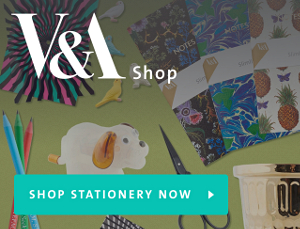Conservation Journal
January 1998 Issue 26
Standards
In order to compare our work to each other's, earn the respect of others, improve ourselves and become a true stand-alone profession, we require standards. The setting of standards has to be one of the most mundane topics to write about, but standards are fundamental to a profession. Not so long ago we were the craftsmen and technicians hidden in the back rooms, whereas now we attract much more attention and therefore our actions are more open to question. This change in outlook has been through minor means like participating in the educational role of a museum and also more high profile initiatives such as the Conservation Centre at National Museums and Galleries Merseyside, which deserved special merit in the 1997 Museums and Galleries Commission Conservation Awards. These would not have been possible without the standards by which to assess the work.
Before we go any further it is useful to look at what standards are. They 'are documented agreements containing technical specifications or other precise criteria to be used consistently as rules, guidelines, or definitions of characteristics, to ensure that materials, products, processes and services are fit for their purpose'1 . Equally standards are codes of practice, non-ratified statements or personal beliefs as to what is 'right' and how we measure quality. It is important to remember the more formal definition of the International Organization for Standardisation (ISO), as it is all too easy to believe that standards are set in stone and to lose track of the fact that they are meant to be an aid not a hindrance.
Standards are developed and published by a great many organizations for example, the American Institute for Conservation or the ISO. Initially a draft document is provided by people working in the field for the profession to use and comment upon. After a suitable review the national body e.g. British Standards Institute (BSI) or Deutsches Institut für Normen (DIN), may choose to ratify this document as a national standard. It may subsequently be recommended for european or international status. In all cases the process takes upwards of five years to complete. In the meantime it is the bodies such as the Museums and Galleries Commission (MGC) and the United Kingdom Institute for Conservation (UKIC) that should be publicising the available standards and monitoring the implementation.
Having established why we need standards we must look to ourselves to produce and implement them. We are our own judges, we know what we do and why we do it and therefore are the key personnel in the production of standards we will adhere to. A standard does not have to be far-reaching to be important; often the internal standards of a workshop/studio/department are the most crucial. Scientific research has long been guided by standards and the protocols of the professional bodies such as the Royal Society of Chemistry but conservation as a profession has not yet produced its tablets of stone; the nearest we get to these are the ethics guidelines of the AIC and UKIC. Perhaps the reason is the profession is not yet old enough. However, in order to develop fully, we must look to setting these standards and to start with adapting, or if you prefer 'pilfering', the standards of other bodies is an easy enough task. For instance, a good starting place for a conservation department would be to reassess BS5454 for archival storage, adapt ISO8756 for air quality to streamline the environmental monitoring and implement EN45001 for the operation of a testing laboratory. Not forgetting that most of what we do involves adminstration, there are various documentation standards (e.g. those produced by the Museums Association or BS4821) which should make life easier.
At a recent workshop in Amsterdam, Centres of Excellence2 , it was stressed that more cooperation was needed for conservation research to be effective and that assessment of educational programmes required rationalising, both of which start with a need for standards. That is, improved efficiency only comes with clear guidelines and goals and for the global educational communities to agree on quality, for example, on whether a British MA is equivalent to the International Baccalaureate, they have to be able to establish benchmarks throughout the curriculum. Therefore, it would seem that as a profession we are waking up to the fact that these are paramount which just leaves us to get on with it!
Notes
1. International Organisation for Standardisation worldwide web page; http:\\www.iso.ch\

January 1998 Issue 26
- Editorial - What is Research?
- Standards
- Ethics in Action - Conservation of King James II's Wedding Suit
- The Stein Loan of Textiles in the Victoria and Albert Museum
- Consolidating Museum Staff - Training in the Great Outdoors
- Conservation Department Group Photograph
- 'Can It Go?'
- Modern Art: Who Cares? Amsterdam 8-10 September 1997
- An Anglo-Asian-American Experience
- United Kingdom Institute for Conservation and The Victoria & Albert Museum
- RCA/V&A Conservation Course Abstracts
- Printer Friendly Version